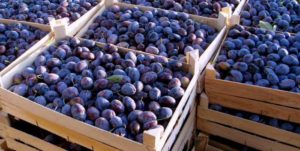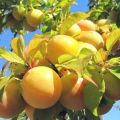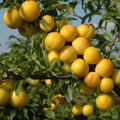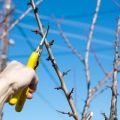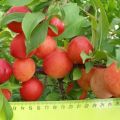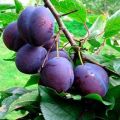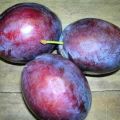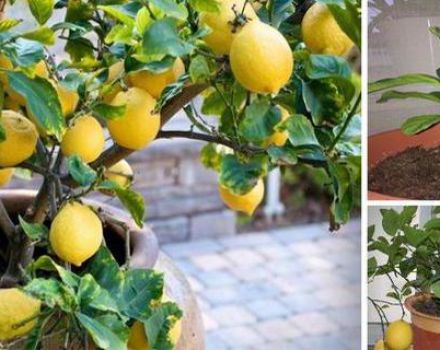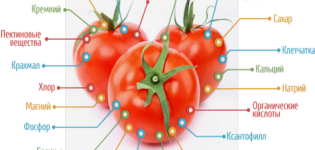Description of the plum variety Firefly, planting dates, cultivation and care
If you need to choose a highly productive and relatively unpretentious variety, then you should give preference to such a tree as the Firefly plum. It is also appreciated for its increased immunity to major ailments and parasitic individuals, good frost resistance. To grow a plant that is abundantly fruiting and resistant to adverse environmental factors, you need to know the basic rules of planting and care.
Plum breeding history Firefly
A varietal tree with an average ripening period is the result of crossing the Volga beauty and Eurasia 21. The work was carried out at the IV Michurin Research Institute of Genetics and Breeding. The fruit crop was bred by L.E. Kursakova, G.A. Kursakov, R.E.Bogdanov and G.G. Nikiforova. In 2004, the variety passed the state test.
Description of culture
The Firefly plum is practically devoid of flaws, it is positioned as a fruitful and cold-resistant plant. Even novice gardeners can grow it.
Wood appearance
Plum Firefly is distinguished by its vigorous growth and the presence of a spreading crown. The tree reaches a height of 5 meters. The medium thickened crown forms an oval shape. Brown-brown shoots have pubescence, they grow thin and straight.
The leaf apparatus is distinguished by an elliptical shape, dark green color and medium size. There is a crenate serration along the edges. The surface of the concave sheet plate is smooth, matte.
Stipules are small and fall early. The pigmented petioles are also of medium size. The tree at the flowering stage is covered with white small flowers.
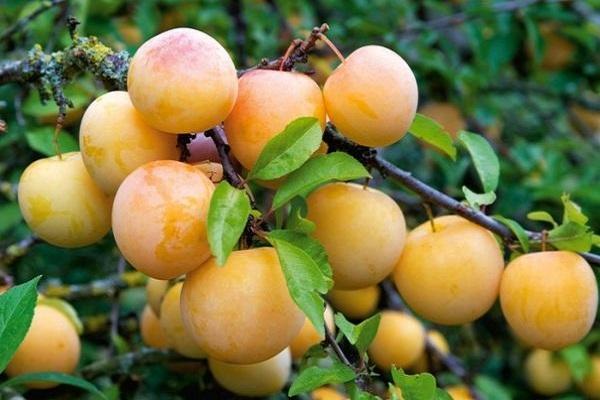
Fruit taste
The Firefly plum produces large fruits. Their color is greenish-yellow, a light waxy bloom is visible. Fruit weight 40 grams, wide-round shape. There are no difficulties in separating the bone from the pulp. Firefly plum is known for its juiciness, sweet and sour taste and pronounced aroma.
The Firefly plum earned a tasting point of 4.5 points. Indicators of sugar content of the variety are 13%, acidity - 1%, and dry matter - 14.05%. There are 6 milligrams of ascorbic acid per 100 grams of fruit..
Characteristic
Knowledge of the varietal characteristics of the Firefly plum enables the gardener to harvest a rich harvest.

How does a plant tolerate drought and frost
The Firefly plum has a good degree of winter hardiness and drought resistance. She is able to painlessly endure temperature drops to -20 degrees. But young plants are recommended to be additionally protected.
The tree can also survive dry weather, but it should be supported and irrigated abundantly once every 10-12 days. Not only the lack of moisture has a detrimental effect on the Firefly plum, but also its excess. Excessive moisture in the soil provokes the development of fungal infections.
Disease and pest resistance
Due to the high degree of resistance to major diseases, in particular to moniliosis, rust and clotterosporia, the Firefly plum is actively grown on an industrial scale. With proper care, fungal diseases are not terrible for the plant. From harmful insects, the tree can attack small aphids. Therefore, the fight against parasites should also be directed at the destruction of garden ants.
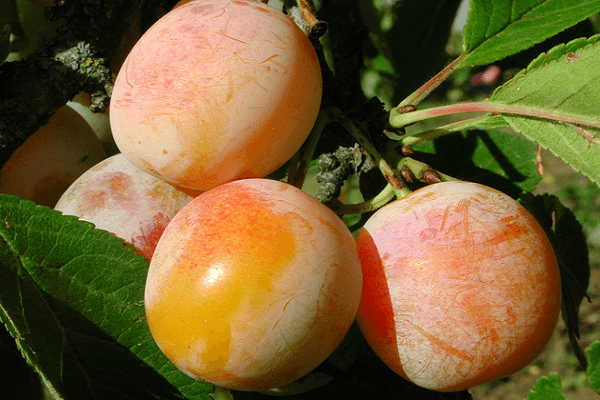
Self-fertile plum or not?
Since the Firefly plum does not belong to the category of self-fertile plants, it needs additional pollination. You need to choose varieties that bloom at the same time as this hybrid.
Pollinator varieties
Renklode fruitful, Mayak, collective farm Renklode have proven themselves well. Such garden plantings near the Firefly plum will make it possible to collect up to 20 kilograms of harvest from one tree.
Flowering and yield
The flowering phase of the plum Firefly begins in May 12-19. The tree begins to bear fruit in 3-4 years after determining to a permanent place. The crop yields within 10-15 years, and lives for 25 years.
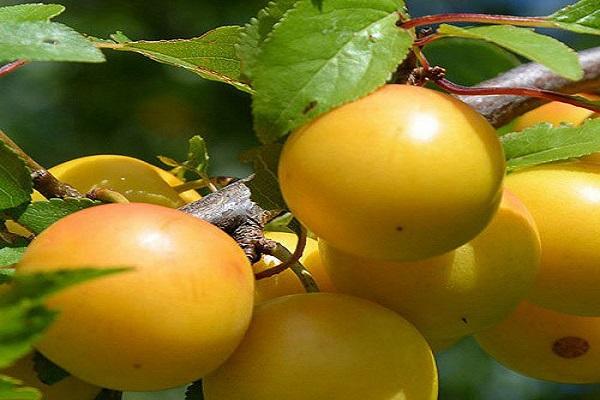
Unlike other stone fruit crops, the Firefly plum yields fruits consistently and abundantly. When grown on farms, productivity indicators are almost 112 centners per hectare.
Collection and application of fruits
Given the universal purpose of the fruit, the Firefly plum is used both for winter preparations as raw materials and for making desserts. The crop is not prone to cracking, it can be transported over long distances. The commercial and consumer qualities of Firefly plum are high.
Advantages and disadvantages of the variety
When growing the Firefly plum, the following positive characteristics were observed:
- large-fruited;
- excellent taste;
- universal use of fruits;
- resistance to drought, frost;
- high rates of productivity;
- increased immunity to major ailments and parasitic individuals;
- crop transportability;
- not exacting care.
Plum Firefly attracts the attention of gardeners with its perspective and lack of serious disadvantages. The only flaw in the plant is the dependence of yield indicators on the presence of pollinating varieties on the site.
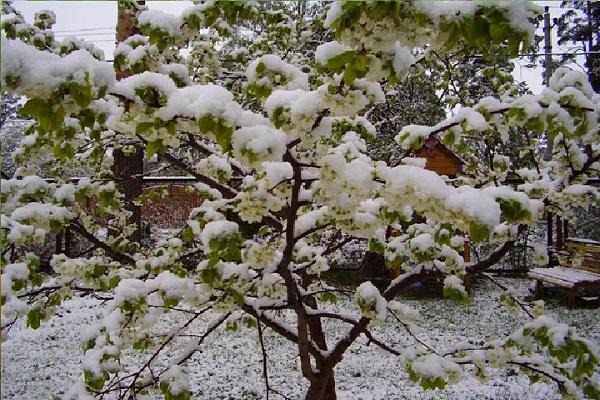
Planting a tree on the site
In order to initially create the most comfortable conditions for growth, it is necessary to familiarize yourself in more detail with the basic rules for planting the Firefly plum.
Disembarkation dates
The choice of planting dates for siva Firefly is influenced by the climatic conditions of a particular region. If the planting of seedlings will be carried out in the southern regions, then it is recommended to make it in the fall, and in the northern regions - in the spring. Preparatory work should be done in advance.
Seedling preparation
When buying planting material, you should give preference to annual or biennial plants with a well-developed root system. It should not have any traces of mold, signs of damage by pathogenic microorganisms, as well as various kinds of damage.
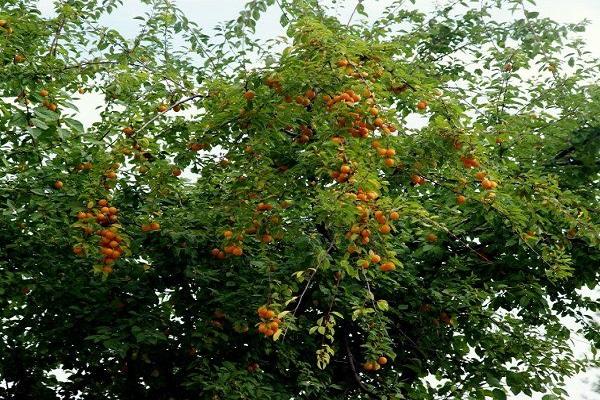
If the roots of the Firefly plum have dried out a little, then they can be kept in a container with water for 2-3 hours.Before planting, they should be treated with a solution of a growth stimulant like Kornevin.
Choosing the best place
It is effective to plant Firefly plum in a well-lit clearing protected from through winds. To prevent the plant from being negatively affected by cold fog, it is recommended to plant it on a hill. The depth of groundwater at the landing site should be at least 1.5 meters. Wetlands are the enemy of fruit crops.
Planting technology
The dimensions of the landing pit for the Firefly drain are: 70 × 70 centimeters, depth 50 centimeters. To enrich the soil with useful components, use 1 bucket of manure, ½ handful of potash fertilizers, 2 handfuls of superphosphate and 1 shovel of wood ash.
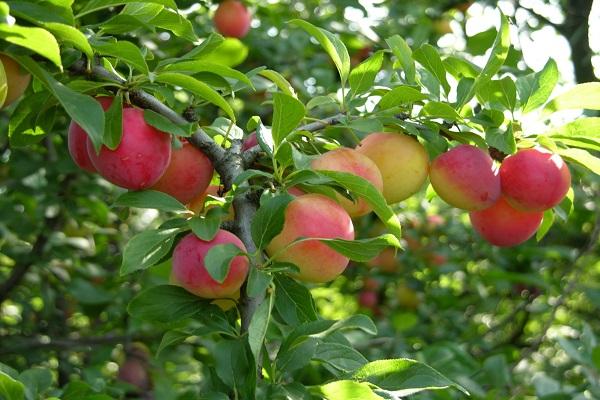
In the prepared hole, where a drainage layer (10 centimeters) has already been laid, a seedling is placed and its spread roots are carefully sprinkled with soil mixture. To avoid the formation of voids in the hole, it is necessary to lightly compact the earth. It is not worth deepening the root collar, it should be 5-7 centimeters higher from ground level.
Watering the Firefly plum should be done by means of a 10 cm deep groove formed in a circle. To preserve moisture and against weeds, a mulching layer of peat or humus, dry earth will help.
Care
Plum Firefly does not cause difficulties in maintenance, to maintain its health and abundant fruiting, it is necessary to regularly loosen the soil, prevent the soil from drying out in the near-trunk circle, add nutritious compositions and protect against diseases and pests.
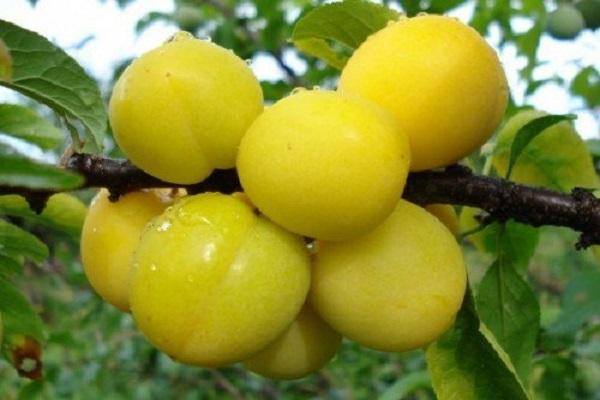
Watering and fertilizing
It is especially important to carry out irrigation measures in the first years after planting. The signal for performing the procedures is the drying of the topsoil. Three irrigations are enough per season. It is better to moisten the soil in the evening.
Organic fertilizers under the plum Firefly are added once every three years. In the fall, it is recommended to add a mineral complex composition in the same dosage as during planting. Under mature plantations, it is effective to mow the grass and lay it in the near-trunk circle.
This technique allows you to both mulch the soil and feed.
Crown molding
Manipulations associated with pruning begin to be performed from the second year of the tree's life. The crown should be formed taking into account the standard version typical for plum culture. Every year, the plant should be inspected and all incapacitated branches, shoots with signs of infection, as well as growing into the crown, should be removed. In order for the wound surface to heal faster and not become a source of problems, it is necessary to disinfect it with garden varnish.
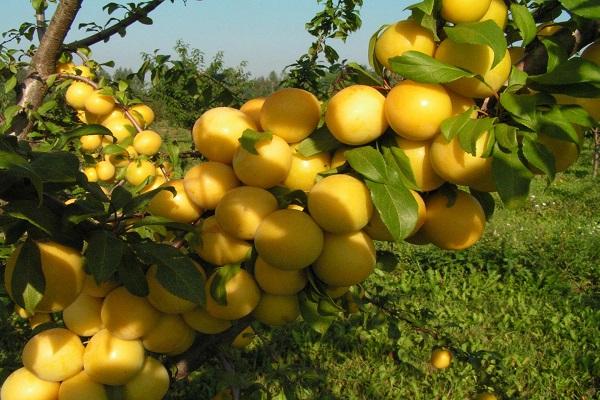
Barrel circle care
It is recommended to loosen the soil after each irrigation in order to prevent oxygen starvation of the roots. Young growth should be removed in a timely manner. After each treatment, the soil in the near-trunk circle must be mulched using 1 bucket of humus for this purpose.
Protection against parasites and diseases
One of the ways to resist pests is to whitewash the trunk. Under adult plantings, staining is done and trunks are tinned. To prevent the development of diseases and the invasion of parasitic individuals, it is necessary to spray the Firefly plum with insecticidal agents. The manipulation is carried out before the beginning of the flowering phase, and the second manipulation is carried out along the ovary.
It is recommended to treat the plants with Bordeaux liquid once throughout the season, diluted according to the manufacturer's instructions. In addition, the fallen leaves are burned to exclude pests from wintering in it.
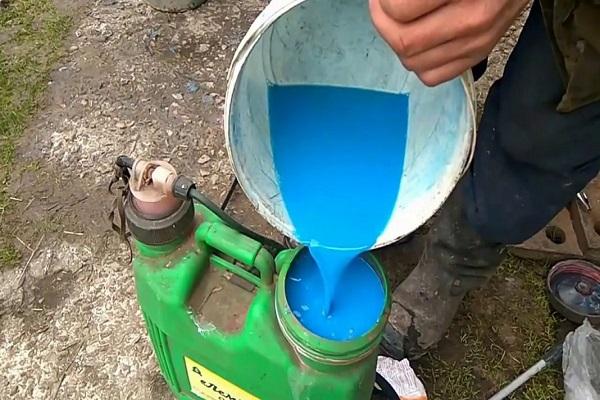
Preparing the plant for winter
First of all, the earth in the near-trunk circle must be dug to a depth of 30 centimeters and fertilized (humus, wood ash, superphosphate).Plum Firefly should be treated with Bordeaux liquid. Before the onset of cold weather, at least 35 liters of water are poured under each planting. Wrap the trunk from rodents with roofing material.
Growing plum Firefly is not difficult and profitable. The tree bears fruit stably, the main thing is to adhere to correct agricultural techniques and not neglect preventive measures against diseases and pests.

